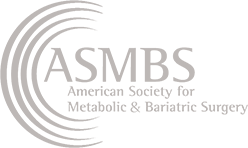What Is a Hernia?
A hernia is an abnormal protrusion of abdominal contents (e.g., small or large intestine or fat within the abdomen) through an area of weakness or a defect in the abdominal wall. Hernias may occur naturally like those in the umbilicus or groin area, or they may occur at the site of a previous abdominal surgery, such as an incisional hernia.
While some hernias are present at birth (i.e., umbilical or groin), excessive straining, coughing, heavy lifting, and sitting or standing in one position for extended periods can contribute to or precipitate hernias.
Most hernias present as a bulge that pops in and out of the abdominal wall (reducible), but some progress to the point where they cause pain. Hernias become life-threatening when abdominal contents, especially the intestine(s), become entrapped (obstructed or incarcerated) and the blood supply is compromised (strangulated). Having laparoscopic hernia repair can help alleviate pain, prevent life-threatening damage and inhibit further hernia growth.
Inguinal or Groin Hernia
Heavy lifting, persistent coughing, and straining with bowel movements or during urination can induce chronic strain. This strain causes separation of the abdominal wall muscles in the groin area, resulting in an inguinal hernia. This condition is more common in men than in women.
Umbilical Hernia
During gestation, the fetus is connected to the womb by the umbilical cord, which passes through a small opening in the developing baby’s abdomen. While the opening generally closes soon after birth, it remains open in some babies, becoming larger to the point where the intestine or abdominal contents can protrude.
Most umbilical hernias are present at birth and, without an umbilical hernia repair, increase in size as one enters adulthood, goes through pregnancy or experiences the increased pressure within the abdomen associated with obesity and other conditions.
Incisional or Ventral Hernia
Abdominal surgery of any kind can create an area of weakness in the abdominal wall. Improper wound healing, especially from infection, can contribute to the development of this weakness. Open abdominal surgery increases this risk compared with laparoscopic/robotic surgery. Additional risk factors include smoking, diabetes, advanced age, pregnancy or increased pressure within the abdomen from obesity and other conditions.
Robotic Hernia Repair Surgery
Hernias should be repaired to prevent them from increasing in size, causing pain, and to prevent life-threatening complications. The inguinal hernia operation can be performed through laparoscopic surgery, typically utilizing a mesh to reduce the risk of recurrence.
Get Started Today
Dr. Srikanth is an American Board of Surgery-certified surgeon who has performed hundreds of surgeries for hernia repair in Seattle, laparoscopically and with da Vinci® robot assistance, enabling faster recovery. After a laparoscopically performed hernia operation, most patients are discharged the same day or within 24 hours.







